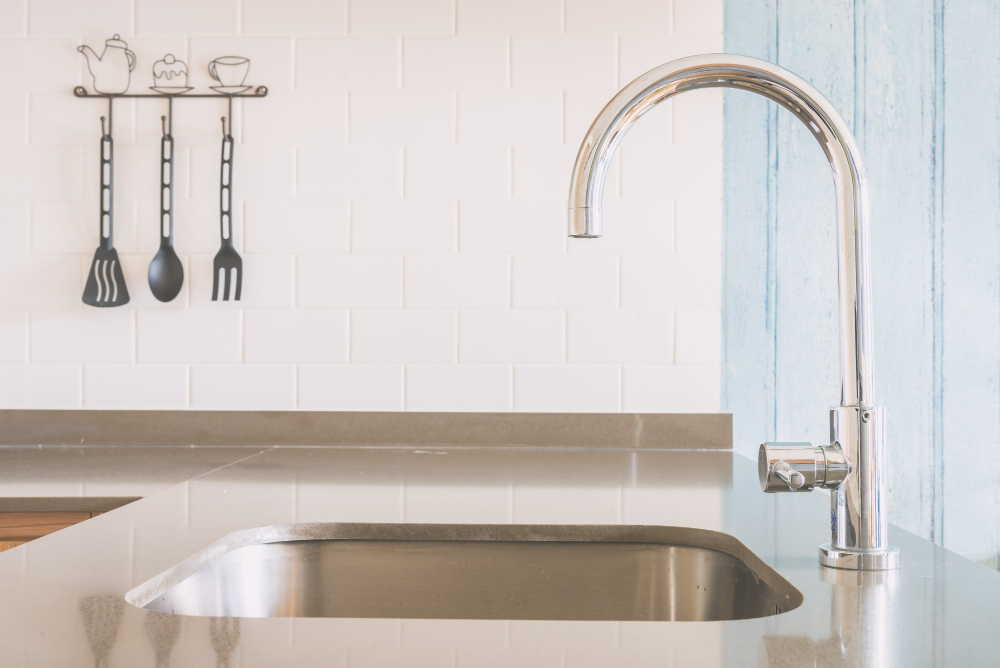
Planning the kitchen and placing the various elements in it requires deep thought, and the sink is at the forefront of importance. It is one of the most used items in the house – where we wash vegetables, clean dishes, and use water almost on an hourly basis.
Choosing the right kitchen sink ensures maximum comfort and a harmonious appearance, and today the market offers a wide range of options. From a variety of materials, through shapes and installation types, to compatibility with a garbage disposal, which has become an integral part of the modern kitchen.
There are different types of sinks that differ from each other in the type of material they are made of, their design, and their functionality. The first and most popular is a stainless steel sink, which comes in different thicknesses. Kitchen sinks They offer resistance to rust and stains, are easy to clean and have a modern look. However, it is important to choose an appropriate thickness to avoid dents or excessive noise when in contact with the water flow.
Another option is ceramic or porcelain, which has a particularly classic and clean look. A thick ceramic sink is very resistant to wear and scratches, but it is slightly heavier and requires professional installation.
For those looking for a luxurious and unique design, sinks made of composite materials (e.g., granite or quartz) may be an excellent option. These sinks combine minerals and binding materials (resin) to create an impressive appearance and are resistant to stains and scratches. They are available in different shades, so they can be easily matched to the style of the kitchen.
Most people are torn between a large single sink, a double sink (two bowls) or even a combination of a main sink with a small sink for draining. A single sink offers generous space for cleaning large pots and a comfortable work space. A double sink allows for separation between different operations (e.g., washing vegetables and a bowl for soaking dishes), thus potentially streamlining your work in the kitchen. Visually, the main shapes include rectangular, square or round, with the choice depending on personal taste and the dimensions of the kitchen cabinets.
Also in recent years, more and more people are discovering the benefits of Garbage disposals Integrated into the kitchen sink. A garbage disposal is a device that is installed under the drain opening of the sink, and its purpose is to crush organic waste (such as food scraps) into tiny particles that are easily washed down the drain. To ensure that the disposal works efficiently and is maintained over time, it is important to choose a sink that is optimally suited to the mechanism.
First of all, measure the area designated for the sink and consider the kitchen configuration. In small kitchens, it is sometimes worth choosing a single sink that maximizes space, while in large kitchens you can consider a double sink. It is important to ensure that the height of the sink and the drain opening match the height of the person working in the kitchen, to prevent back pain or unnecessary effort. Adjusting the location of the faucet and the space for movement around it are also considered crucial factors in daily comfort.
Keep in mind that the cost of a sink and its installation varies greatly depending on the material, size, and brand. It is worth planning a budget in advance, and checking which option offers the best price-quality ratio. Don't forget that the grinder may also add to the cost, but it contributes greatly to convenience and helps reduce organic waste in the trash cans.
Regarding maintenance, make sure you choose a sink that is easy to clean, and it is recommended to avoid harsh cleaning agents that may damage the surface. If you choose to incorporate a garbage disposal, be sure to follow the manufacturer's instructions, use relatively soft waste, and run it regularly to prevent residue buildup.